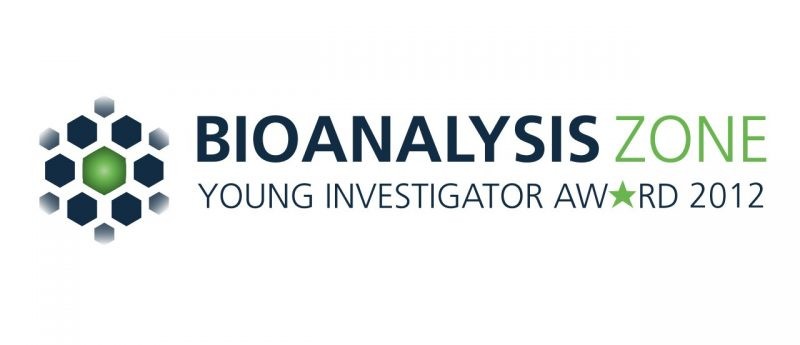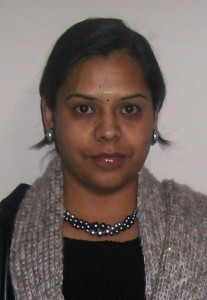2012 Young Investigator Award Finalist: Sathyadevi Venkataramani

Nominee:
Nominated By:
Supporting Comments:
Bioanalysis Zone asked Sathya to highlight one of her favorite published articles and explain her reasoning.
Devi VS, Sprecher CB, Hunziker P, Mittl PR, Bosshard HR, Jelesarov I. Disulfide formation and stability of a cysteine-rich repeat protein from Helicobacter pylori. Biochemistry 45(6), 1599–1607 (2006).
What were the most difficult challenges encountered in this study? And how were they overcome?
I take pleasure in discussing one of my peer-reviewed publications describing the role of disulfide bonds in the folding of the gram-negative Helicobacter pylori cysteine-rich protein B (abbreviated as HcpB). The aim of the research was to characterize the disulfide folding pathway of HcpB, both in vitro and in vivo. The most challenging task in this work was to capture the folding intermediates, which are transient for structural characterization. In this study, reversed-phase HPLC was used as the primary tool, which allowed separating the molecular species at acidic pH that freezes the state of cysteines in a protein. Taking advantage of this wonderful technique, I was able to capture the intermediates and used a cyanylating agent that irreversibly blocked all cysteines. Subsequently, MS was used to structurally characterize the cyanylated disulfide intermediates. In general, capturing folding intermediates is one of the biggest challenges for a protein biochemist because folding takes place in the femtosecond timescale. At the same time, RP-HPLC chromatography is an advantageous bioanalytical technique that can be used for monitoring the disulfide bond formation of a protein. We were able to demonstrate an excellent correlation between in vitro and in vivo folding of HcpB, which has significant implications towards the stability and hence activity of the protein.
What made you decide to study this particular field of bioanalysis? What makes it so appealing?
Nearly 50% of world population is infected by the gram-negative H. pylori pathogen, which leads to gastric cancers, peptic and stomach ulcers, MALT lymphoma and so on. H. pylori is capable of affecting the host cell signaling pathways through expressing novel virulence factors and H. pylori cysteine-rich proteins are such virulence factors. These novel virulence factors are secreted by the bacteria that play important roles in triggering the interaction between the host and the pathogen during the course of infection. Disulfide bond formation is a crucial step in the proper folding of these secreted proteins. Given the importance of disulfide bonds in these cysteine-rich repeat proteins and understanding the role of H. pylori proteins and their implications on pathology is indisputably the most exciting and appealing research in bioanalysis. In addition, taking advantages of the well-known techniques such as chromatography and MS have triggered my interests to pursue the research on H.pylori proteins.
Colleague quotes
Here is what some of Sathya’s friends and colleagues had to say about her.
Frederick Holtsberg, Integrated Biotherapeutics, Inc., Gaithersburg, USA
“Sathya is always smiling and provides positive energy to the group. Her meticulous, hard-working attitude allows her to complete her experiments quickly and effectively. Her positive attitude encourages others in the entire company. Moreover, her breath of knowledge allows her to critically evaluate the work in order to design the next series of experiments. Sathya knows how to balance her work life with her family life. She goes to Zumba and encourages other company employee’s to participate. Sathya has a very unique way of displaying her positive attitude and hard work in her day-to-day proceedings. The company is better for it.”
M. Javad Aman, Integrated BioTherapeutics, Inc., Gaithersburg, USA
“Sathya is highly energetic and motivated; very intelligent and capable of critical thinking; takes initiative and is a go getter; helpful team player who is fair to others and respected by peers. She is very skilled in the bioanalytical field. She has successfully implemented several new methods in our laboratory that are now being routinely used and becoming increasingly critical for our product development. She has had key achievements over the past year in that she worked out purification processes for several very difficult virus glycoproteins. Given these contributions she has become a very valuable member of our product development team.”
Kelly Lyn Warfield, Integrated BioTherapeutics, Inc., Gaithersburg, USA
“Sathya is very independent and creative. She is highly motivated and very driven, as well as very mature, dependable and hard-working. She takes on extra work in order to really make sure she contributes and delivers the best quality work product, going above and beyond in many instances. Sathya’s motivation and zeal for science are really infectious. She gets excited about her work and it is passed onto those around her. She is a strong thinker and teacher; I think she has the most excellent potential as a future independent research scientist. On a personal level, Sathya’s family is very important to her – she has a lovely daughter.”




